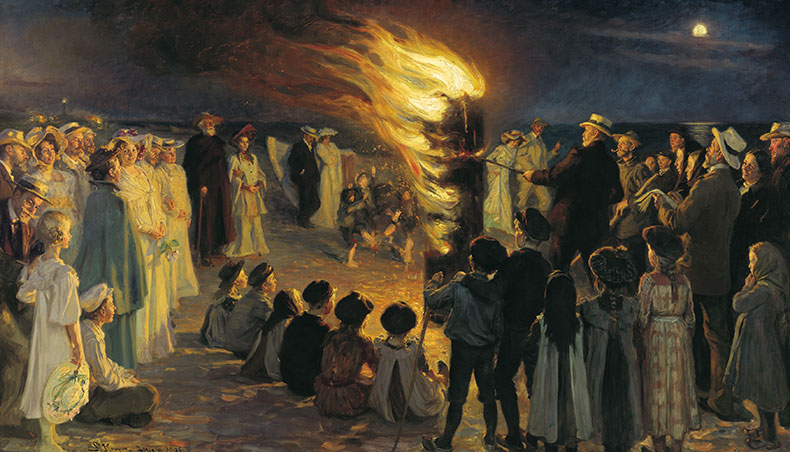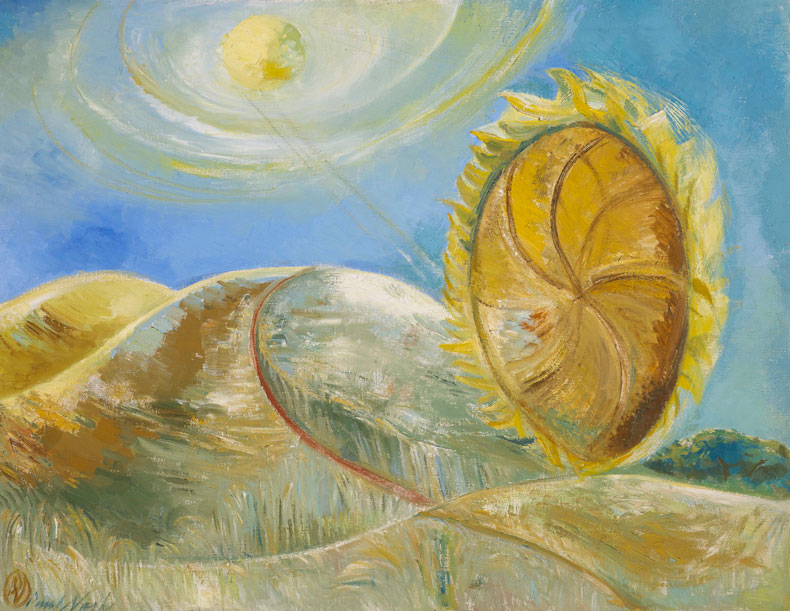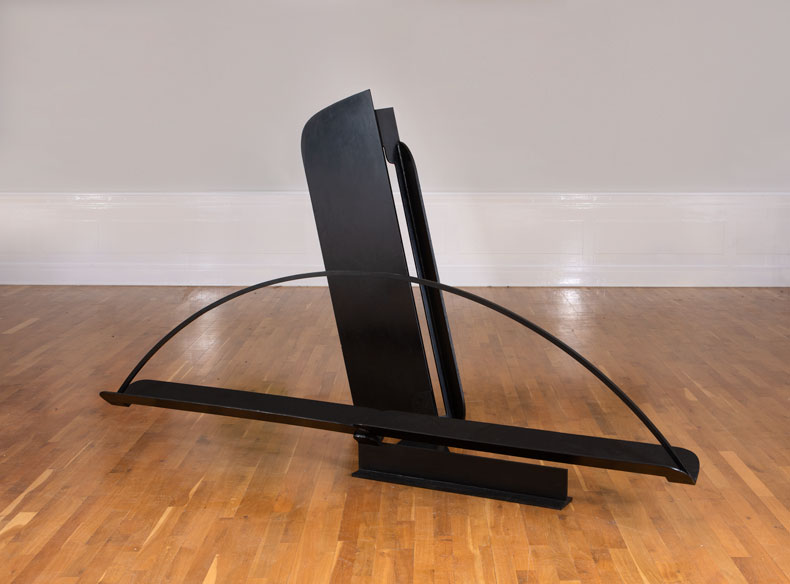 ‘Four things to see this week’ is sponsored by Bloomberg Connects, the free arts and culture app. Bloomberg Connects lets you access museums, galleries and cultural spaces around the world on demand. Download the app here to access digital guides and explore a variety of content.
‘Four things to see this week’ is sponsored by Bloomberg Connects, the free arts and culture app. Bloomberg Connects lets you access museums, galleries and cultural spaces around the world on demand. Download the app here to access digital guides and explore a variety of content.
Each week we bring you four of the most interesting objects from the world’s museums, galleries and art institutions, hand-picked to mark significant moments in the calendar.
Whether you’re a diehard pagan who makes an annual pilgrimage to Stonehenge or just someone who pays close attention to the shifts in season and sunlight, the summer solstice is a special time of year.
Midsummer is celebrated in different ways across the Northern Hemisphere, but it has generally been believed to be a magical time of good fortune, healing and fertility. In times gone by, spells were cast to conjure visions of one’s future partner, bonfires were lit, raucous behaviour was encouraged and dances were held around the maypole.
In the United Kingdom, the shortest night is celebrated on 21 June; however, in Cornwall, the Golowan (Midsummer) celebrations – featuring horse skulls and the election of a mock mayor – stretches over nine days. The main solstice event, ‘Mazey day’, falls on 24 June this year. This Cornish tradition aligns more closely with those of the rest of Europe where, thanks to the church’s co-option of the pre-Christian ritual, midsummer falls on 23 June: the eve of the feast day of Saint John the Baptist, whose birth is a counter to the celebrations of Jesus’ nativity around the winter solstice.
Nowadays, the folk horror film Midsommar (2019) by Ari Aster may be the first cultural association that comes to mind, but the strange rituals of the solstice have inspired many artists over the centuries. In celebration of the longest day of the year, we take a look at some of the most bewitching artworks from collections around the world.
Titania, Bottom and the Fairies (1793–94), Henry Fuseli. Kunsthaus Zürich

1. Titania, Bottom and the Fairies (1793–94), Henry Fuseli
Kunsthaus Zurich
Perhaps the most famous work of literature made in response to the longest day of the year is Shakespeare’s A Midsummer Night’s Dream (c. 1596), in which the strange light of this magical evening allows fairies to emerge from the forest to perform their trickery. In this painting by the Swiss artist Henry Fuseli, the character Bottom, whose head has been transformed into that of a donkey by the mischievous fairy Puck, is the subject of Queen Titania’s temporary adoration. Click here to find out more.
Midsummer Eve Bonfire on Skagen’s Beach (1906), P.S. Krøyer. On deposit from Bankassistent Henry Sthyrs Mindelegat, Art Museums of Skagen.

2. Midsummer Eve Bonfire on Skagen’s Beach (1906), P.S. Krøyer
Art Museums of Skagen
Bonfires on the beach are an essential part of celebrating Midsummer – also known as Saint Hans’ Day – in Denmark. These fires were originally intended to ward off witches and evil spirits and were usually accompanied by lively picnics, speeches and songs as a community came together. Click here to find out more.
Solstice of the Sunflower (1945), Paul Nash. National Gallery of Canada, Ottawa. Photo: NGC

3. Solstice of the Sunflower (1945), Paul Nash
National Gallery of Canada, Ottawa
Paul Nash was apparently inspired to paint this scene after reading The Golden Bough: A Study in Magic and Religion (1890) by James George Frazier, a wide-ranging study of mystical rites worldwide. The artist described how he made the sunflower into a ‘firewheel’ in reference to the ‘blessing of Midsummer Fire’ celebrated by cultures across the globe. Click here to find out more.
Solstice (1974), Michael Lyons. Photo: Sheffield Museums; © the artist’s estate.

4. Solstice (1974), Michael Lyons
Graves Gallery, Sheffield
This steel sculpture was made in 1974 by Michael Lyons, who alongside his work as a sculptor was also a key figure in the creation of Yorkshire Sculpture Park. The artist had a lifelong interest in mythology and cosmology, as demonstrated by this abstract work that suggests the arc of the sun at the midpoint of the year. Click here to find out more on the Bloomberg Connects app.
Download now
![]() ‘Four things to see this week’ is sponsored by Bloomberg Connects, the free arts and culture app. Bloomberg Connects lets you access museums, galleries and cultural spaces around the world on demand. Download the app here to access digital guides and explore a variety of content or scan the QR code.
‘Four things to see this week’ is sponsored by Bloomberg Connects, the free arts and culture app. Bloomberg Connects lets you access museums, galleries and cultural spaces around the world on demand. Download the app here to access digital guides and explore a variety of content or scan the QR code.



